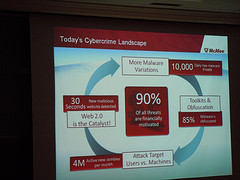The Brisbane Times has published a list of the 11 biggest mistakes e-commerce sites make. Heed these warnings:
1. Having Complex Functionality
The best sites should be structured so absolutely no thinking is necessary when navigating through, including minimal steps between product viewing and purchase.
2. Having Poor Site Appearance
A busy, confusing, or ad-strewn site poses functionality issues and isn’t a particularly professional front for a business expecting customers to leave sensitive credit card details. A beautiful website that makes for easy shopping and security will ensure customers are happy.
3. Not Having Compatibility with Mobile and Tablet
Digital retailers must accommodate a range of customers across diverse platforms and employ a website design that is fast loading for mobiles as well as desktop computers.
4. Having Unexpected Fees and Shipping Costs
The number one reason customers abandon their shopping cart is unexpected costs added to their purchase, such as GST, insurance and high shipping fees. Free delivery can be the defining feature that sets a site apart from direct competitors. While free shipping is undoubtedly a huge attraction, shoppers will generally concede to a shipping fee if they feel it is reflective of the product and level of service. A tracking number is also a plus.
5. Overly Long Product and Lack of Customer Reviews
Long-winded product descriptions can turn off shoppers. Pairing concise, keyword-rich descriptions with customer reviews, and even stats on how many times the item has been previously bought, is a good way to reassure customers. A unique product description, rather than that composed by the manufacturer, can also ensure a higher ranking on internet search engines.
6. Having Poor Search Capability
Faceted search — a function that allows users to apply a range of filters to explore information — enhances customer power and control by making it easier for them to home in on the products they are most interested in. Typo-sensitive search also increases the likelihood that a clumsy-fingered user will still see results that best match what they’re looking for.
7. Convoluted Checkout Procedures and Customer Accounts
Forcing a buyer to create an account and enter personal details at the checkout has obvious benefits for the retailer, but it is likely to cause frustration among shoppers who want an instant transaction. Features such as single sign-on, automated saving of a customer’s details, and the option for “guest checkout” transactions that don’t require the creation of a password quicken and enhance the shopping experience.
8. Lack of Social Media Integration
If you’re not posting, instagraming, pinning or tweeting, you’re just not competing. But more than posting a photo, social media should be used to generate positive dialogue among customers and aid the transaction process by facilitating direct contact between the company and consumer. All retailers should have an effective communications policy in place, especially for when customers turn to social media to complain.
9. Poor Quality Images and Zoom Function
Grainy photos or poor zoom function are easy ways to lose a sale, as customers can’t see the detail in the craftsmanship. Instead, use clear, high quality photos.
10. Believing the Transaction is Complete After the Order is Placed
Another golden rule of running an online business is realising that the shopping experience isn’t over when the customer clicks “buy”. Don’t neglect functions such as: recommended “buy next” options, live purchase stats (for instance, five people bought this in the last hour), or prompts for low stock in a “watched” item.
11. Having Ineffective Customer Service
One of the cornerstones of face-to-face retail is good customer service, and this still applies online. Ensuring the product over delivers, that delivery service is on time, and that phone, email and live chat service staff are friendly and helpful, will usually ensure a positive customer response even if something goes wrong.
To read more on this story, click here.









